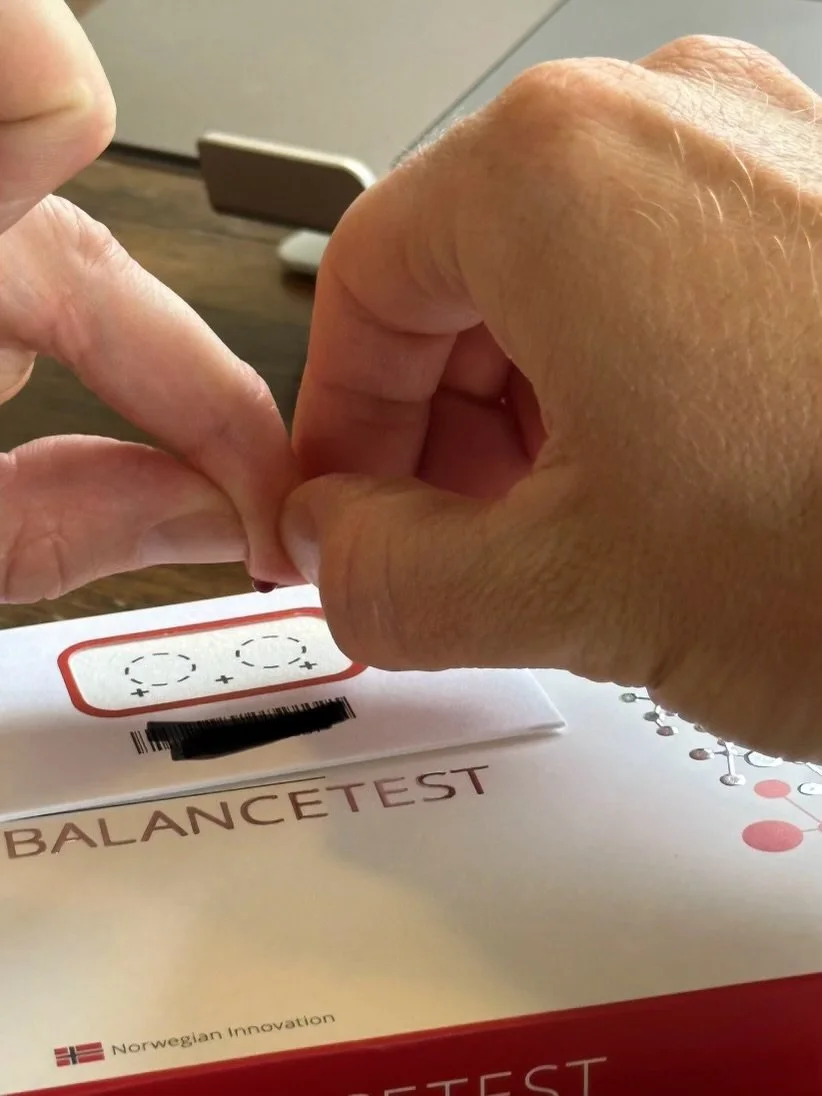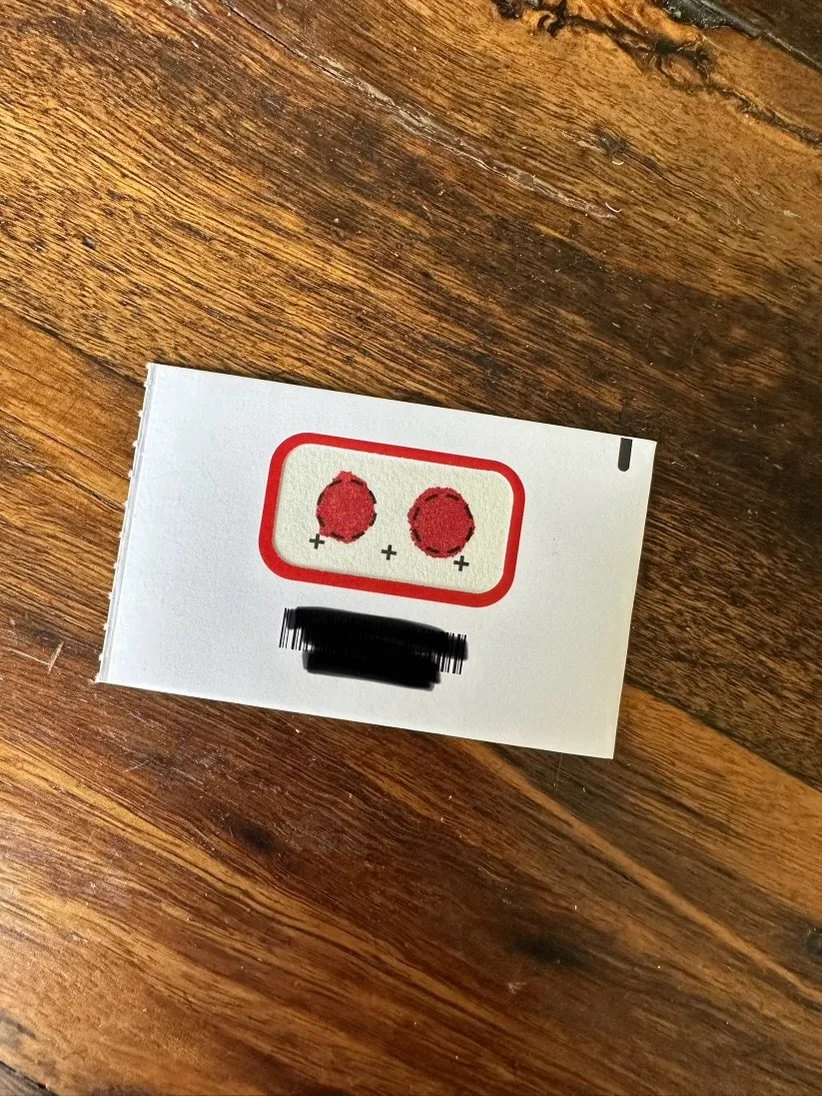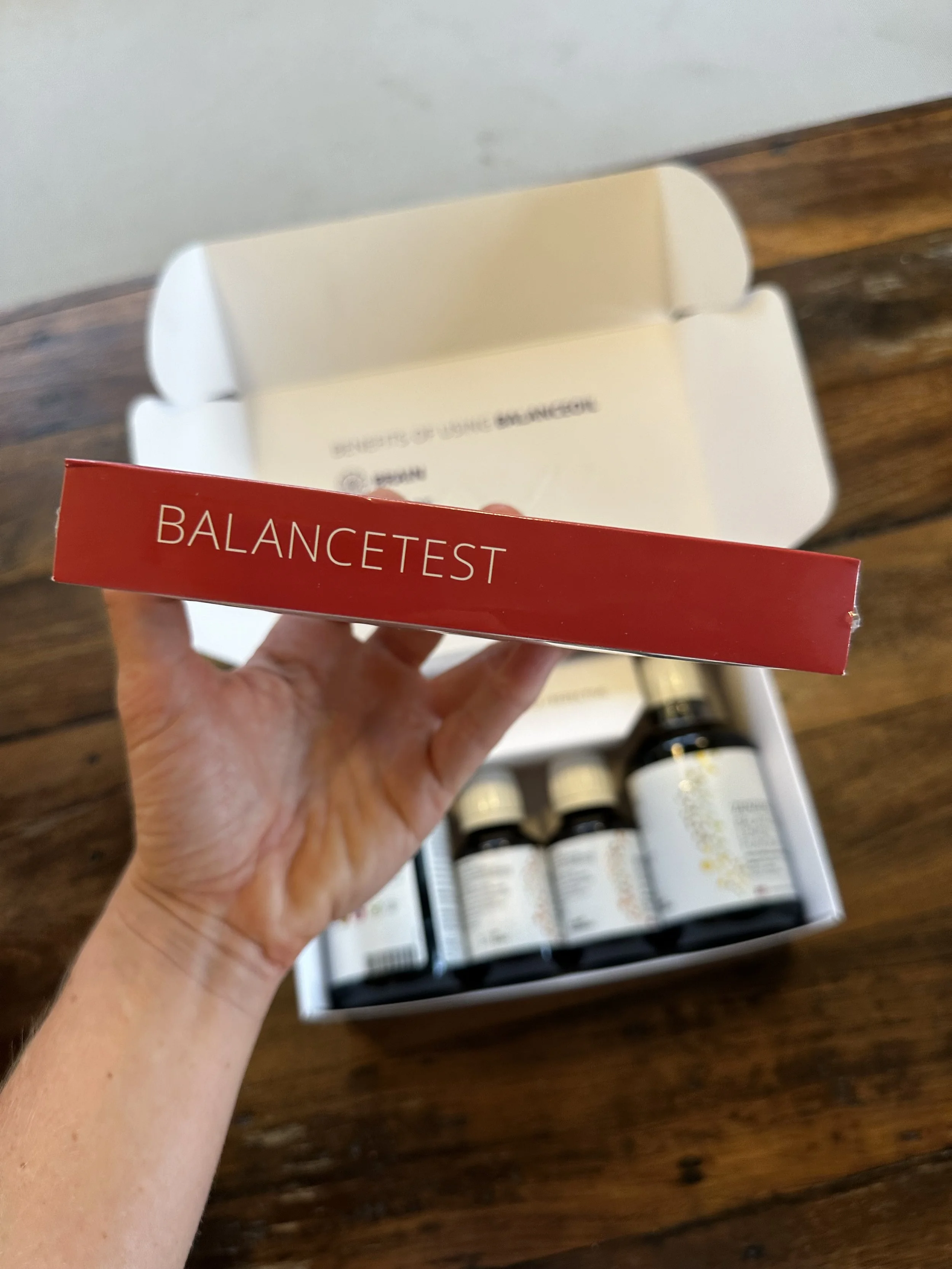
Getting Back in Balance.
Our story
My partner River and I (Camille) value health more than anyone I can think of. We are really blessed to live in an area where organic foods are abundant at our local farmers market.
For years, we have consumed a whole-food, organic, meat-centered diet. Our meat is local and regeneratively raised; we understand and honor the principles of ‘cook-soak-sprout-ferment’, and we ditched processed foods a long time ago (including refined seed oils). We eat 99.9% of our meals at home (we’re even that couple that brings our own food on airplanes). Anyways, you get it: we value health, and we completely embody it in our nutritional choices.
And then there’s fish…
The “missing link” in our diet is absolutely Omega 3’s. We both love fish and seafood, but we don’t eat it very often. We have lived in places without as much access to genuinely fresh wild fish (like landlocked in Austin, Texas), but mostly, we’ve lived and traveled to areas on the ocean that are more abundant in locally caught fresh wild fish (like the North Shore of Hawaii and Byron Bay, Australia where we currently live). The biggest problem we’ve always grappled with when it comes to consuming it regularly is the toxins in most fish.
We avoid larger fish, especially due to mercury concerns. You probably know that mercury builds up in larger fish like tuna, swordfish, king mackerel, and sea bass. Mercury levels increase as the fish moves up the food chain, so bigger fish that live longer have more of it. Smaller fish like sardines and mackerel generally have lower mercury, but they’re often canned, exposing them to BPA or similar toxins from the can lining. It’s easy to dismiss small doses of pollutants, but our close friend who was having tuna 1x week got full-blown mercury poisoning in the last year.
We’ve been extra vigilant about avoiding even small doses of mercury for different reasons. River had mercury fillings in his mouth until about a year ago when he got them removed at a biological dentist— if you’ve had mercury fillings, avoiding any mercury is a non-negotiable as there is already a significant build-up in the body. For Camille, the priority of preventing mercury exposure revolves more around fertility. As we prepare to have kids in the not-too-distant future, we understand how vital it is that I not accumulate any mercury (or other metals) as they are passed down to the baby (especially the firstborn).
So, when it comes to fresh fish, our solution was mostly to avoid it. We do consume wild-caught salmon and sardines here and there (we both enjoy them), but nowhere near enough to hit the daily recommended dose of Omega 3’s (which requires daily consumption). We also know about Joe Rogan’s daily consumption of sardines, which led to arsenic poisoning— but honestly, we’re not about to start consuming that many sardines even without the risk of high BPA/ arsenic exposure. Fresh wild-caught fish is also expensive! Consuming small amounts daily is hard to justify compared to other high-quality protein sources. So, we’re deficient.
But this gap in our diet didn’t properly register until recently, and realizing it has been one of the biggest AHA moments of my life to date.
Omega 3’s 101
Maybe you don’t know, or maybe you want a refresher— but I’ll leave this here in case you want a dive into why Omega 3’s are a non-negotiable for human health.
These dropdowns are just the tip of the iceberg. Omega 3’s are one of the most studied nutrients, so there is abundant and accessible information in reputable published studies if if you want to take a deeper dive.
-
Omega-3s are essential fats your body needs for optimal health but can't produce on its own. They play a key role in brain function, reducing inflammation, and supporting heart health. Main types include EPA and DHA, found in fish, and ALA, found in plants. They’re crucial for cell structure, mood regulation, and reducing risk factors for chronic diseases.
-
The omega-6 to omega-3 ratio measures the balance between these two essential fatty acids in our diet, which directly impacts inflammation in the body. Omega-6 fats, found in many processed foods and seed oils, tend to be pro-inflammatory, while omega-3s from sources like fish are anti-inflammatory. While inflammation is a normal immune response, too much omega-6 compared to omega-3 creates chronic inflammation, increasing the risk of diseases like heart disease, diabetes, and arthritis.
For optimal health, the current recommendation is around a 3:1 ratio of omega-6 to omega-3, but historically, humans maintained a closer 1:1 ratio, which supported balanced inflammation and peak vitality. Today, the average American has a ratio around 15:1, and Europeans are around 10:1—both far from ideal and linked to higher inflammation levels. Meeting government guidelines is one thing, but if you’re aiming to truly thrive, getting as close as possible to that ancestral 1:1 balance supports your body’s natural, healthiest state
-
The Omega-3 Index measures the percentage of omega-3 fatty acids in your red blood cells, with an optimal range of 8-12% linked to better heart, brain, and overall health. However, the global average is around 4-5%, showing that most people are not reaching these beneficial levels.
Omega-3s are essential fats that line the walls of every cell in your body. When your omega-3 levels are low—and especially when your omega-6 to omega-3 ratio is too high—the cell walls become rigid and less flexible. This rigidity restricts the cell’s ability to let nutrients in and flush toxins out, leading to decreased cellular function.
A higher Omega-3 Index helps keep cell membranes fluid, supporting nutrient absorption, detoxification, and overall vitality.
-
Omega-3s, especially DHA, are essential for brain health, forming a significant part of brain cell membranes and supporting flexibility and communication between neurons. Ideally, the brain should contain around 25% omega-3 fats, a level now typically only seen in babies.
Research shows that monkeys fed a diet rich in omega-3s developed highly connected and well-organized neural networks, supporting complex thinking and adaptability. In humans, low omega-3 levels have been linked to an increased risk of neurodegenerative diseases like Alzheimer’s. When we lack these crucial fatty acids, brain cell membranes can become rigid, reducing neural efficiency and inviting a literal regression in cognitive capacity. Maintaining a high Omega-3 Index supports mental sharpness, emotional stability, and long-term brain health, protecting against age-related decline.
-
Omega-3s are essential for reproductive health and play a crucial role during pregnancy and postpartum. For women, these fats help regulate hormones, support healthy cycles, and improve egg quality. During pregnancy, a mother’s body transfers large amounts of her own DHA to the developing baby, where it’s used to build the baby’s brain and nervous system. This transfer depletes the mother’s omega-3 stores, which can lead to low levels postpartum—a factor in “mommy brain” and increased risk of postpartum mood disorders.
In men, omega-3s improve sperm quality, supporting motility and membrane integrity for better fertilization chances. Low omega-3 levels in either partner can lead to hormonal imbalances, inflammation, and reduced fertility. Ensuring a high Omega-3 Index supports reproductive health by nourishing both the parents and, ultimately, the baby’s brain development. For those planning a family, omega-3s are essential for optimizing fertility and ensuring a strong foundation for the next generation.
-
Omega-3s are key to supporting the body’s natural detoxification processes. These essential fats are incorporated into cell membranes, helping maintain their fluidity and flexibility. When omega-3 levels are low, cell walls can become rigid, making it difficult for toxins to exit and nutrients to enter. With an optimal Omega-3 Index, cells can more easily expel waste, reducing the body’s toxic load.
Omega-3s also help reduce inflammation, which is critical for detox. Chronic inflammation can overwhelm the liver and kidneys, the body’s primary detox organs. By balancing inflammation and improving cellular function, omega-3s support the body’s ability to cleanse itself, promoting better energy and resilience in the face of environmental stressors.
Popular detox practices like fasting, dry brushing, and sauna sessions aim to release toxins, but if cell membranes aren’t healthy and flexible from adequate omega-3s, these methods have limited impact. Omega-3s help cells effectively expel waste, making detox efforts more effective.
-
Item description
-
Item description
Fish Oil, I Guess?
So we know we need the Omega 3’s, but fish isn’t cutting it— which leaves supplementing with fish oil, right?
We’ve both had extensive relationships with fish oil. For River, the relationship was born from a long history of sport-related concussions. Learning about the neuroprotective properties of fish oil, he started consuming it in high doses. Eventually, stopping because the habit was expensive, and he didn’t really know if it was helping or not.
For Camille, it was more of an “Omega 3’s are healthy, so I should take fish oil, right?” Which, overall, is typically not strong enough of a driver to really implement a habit. I kept hearing that all fish oil is rancid, and it felt mostly like expensive guesswork that might actually be harming my health, so I quit taking it.
The re-exploration into all things omega 3’s is coming at a time when we’re getting into “pre-conception” mode, as in the fine-tuning (both physically and mentally/ emotionally) in preparation for starting a family. Omega 3’s are so vital during pregnancy, and so this opened the can of worms that led us down this life-altering path.
Why Most Fish Oils Don’t Work
Learning why most fish oils don’t work was a game-changer for us. I mean, truly. It was a watershed moment, akin to first realizing tap water is full of toxins.
The amount of money we spent on fish oil in our lives only to drop off the habit finally made sense: we were indeed not benefitting from the incredible benefits of Omega 3’s because there was a big missing link in the fish oils we were buying (which included Rositas, Nordic Naturals, and Kion).
Without being properly bound to polyphenols (like they are in fish), Omega 3’s have very little bio-availability in the body. They are also quick to oxidize, which is why standard fish oils are rancid before we ever consume them. Rancid fish oil simply means that it is oxidized, and therefore, what could be anti-inflammatory actually ends up being pro-inflammatory. This is not only a waste of money but also a bigger burden on our health.
Even if the fish oil was properly processed and refrigerated, if it wasn’t bound to the polyphenol required for absorption, at best, it was still a waste of money.
Don’t Guess, Test.
Whether you’re currently supplementing with fish oil or not, it’s time to stop guessing. Test-based nutrition is the way of the future— and it’s never been easier to find out exactly what your omega-3 levels are in your actual blood cell.
The problem with common omega blood tests is that they test the blood plasma levels. These tests are a small snapshot into your levels because they only show the free-flowing Omega’s in the blood. So, if you have had fish within the previous 24 hours, your levels will look high.
The test you want is a blood test that measures the omega-3 levels in your red blood cells: cue the Zinzino BalanceTest. This finger prick at home blood test doesn’t just capture a fleeting snapshot; it shows your long-term omega-3 balance because it reflects the omega-3 levels that are actually stored in your cells over the past 4 months.
This cellular measurement offers a more accurate picture of your body’s omega-3 status and needs, unlike plasma-based tests, which can fluctuate depending on recent meals. With Zinzino, you get a precise look at your DHA and EPA levels in your cell membranes, giving you insights to tailor your nutrition based on real, actionable data.
So, we tested.
We were introduced to the test by River’s mentor, who eats just as ‘clean’ as we do. His ratios were 10:1 (reminder that a “healthy” omega 6 to 3 ratio is 3:1, but thriving levels are closer to 1:1).

My Experience
1 month of supplementing
It’s officially been a month of taking between 10 and 12 ml a day (I split mine into two doses, one after breakfast and one after lunch). For starters, I am legitimately mind-blown. Given all that I do for my health (and how devoted I’ve been to this lifestyle for so long), I didn’t realize I had such a long runway ahead of me for how good I could feel. Truly.
Mentally, cognition is just on fire. It almost feels like I’ve taken some kind of focus drug; my ability to think and articulate is at an all-time high. There’s a new degree of coherence and ability to integrate concepts that I’ve been exploring for years now.
Emotionally, I’ve noticed that my capacity in partnership has expanded. This has been my favorite benefit so far because my partnership with River just continues to expand us both. Our ability to pause after a trigger, notice the dysregulation, and actually lean in, apologize/ repair, and own our part has never been greater. This makes so much sense because Omega-3’s make our cells more flexible and fluid. I literally feel this is how we show up for one another; there’s a new degree of flow in our dynamic that shifted within about two weeks of supplementing. Our dyregulated emotions kick up a storm when we don’t feel safe/ when we feel under threat, and much of this is perception-based. It doesn’t matter how much somatic work/ inner child healing you do— if your cells aren’t getting the fats they need to operate well, it makes total sense that your body is living on the edge of fight-or-flight.
Physically, ok woah, so this one is crazy too. My body composition is shifting (losing body fat), and I am doing absolutely nothing different. The really wild part is that I realized when I was living in Greece and Italy for 4ish months back in 2019 that my body fat had just melted off of me. I was eating small fish 3x a day then, and for the life of me, I couldn’t figure out why I was losing body fat because I wasn’t even working out during that time. Introducing the Omega 3’s recently, it fully dropped in that time when my body comp shifted easefully; I was saturated with omega 3’s. Again, this makes total sense because losing body fat requires healthy cells that can let in the good (nutrients) and let out the bad (toxins). I’ve genuinely been confused for most of my adult life why I have to “hustle” so hard and be so meticulous with everything and how much of an uphill battle it is for me to have a healthy (as in optimal for female physiology) amount of body fat. I wasn’t giving my cells the literal building block nutrient required for them to operate, so of course, it was a struggle…! Physically I also noticed my sweat got stinky for about 10 days near the start of supplementing. I got in the sauna a bit more to sweat it out and also noticed I was sweating more easefully than ever (prior, I would always dry brush to get my body sweating), but with thriving cells, there was no need. They were releasing toxins easefully again.
I will update this section as my experience with the product grows, but honestly, my mind-blowing experience so far is what gave life to this page. I wanted to share it far and wide and have a proper resource so people can come to see it all laid out in one place.
Let’s Sum It Up
A quick 5-minute video to understand Omega 3’s: the problem and the solution.
With over 1 million blood tests across 100+ countries, Zinzino has found that 97% of people are deficient in Omega-3s and have an imbalanced 6:3 ratio.
After just 120 days on BalanceOil+,
95% achieve a healthier 3:1 balance.
Making it Simple.
-

Balance Oil + Testing Kit
This kit provides you with two tests and 6 months of BalanceOil+.
You can order all 6 months upfront, or opt for the standard delivery method that ships every other month. On month 4, you receive your second BalanceTest to re-test and check in on your Omega levels.
FAQs
-
Zinzino partners with Vitas Analytical Services, an independent, GMP-certified laboratory located in Oslo, Norway. Established in 1994, Vitas has over 25 years of experience in advanced biomarker analyses and adheres to strict ISO-certified standards, ensuring precision and reliability in all test results. Vitas collaborates with leading universities and research institutions worldwide, including the University of Cambridge and King's College London, contributing to numerous high-impact publications in journals such as Nature and The Lancet.
The Zinzino BalanceTest is completely anonymous, as each test is linked to a unique ID number instead of personal information. This ensures your results are secure and confidential, with no identifiable data shared during the analysis process.
-
Yes!
The results are presented in a clear and visual format, using color-coded charts and straightforward explanations. You'll see your Omega-6:3 ratio, your Omega Index, essential fatty acid profile, and other key metrics. Each section includes insights on what the numbers mean for your health and actionable steps you can take to improve your balance. Even if you're not familiar with lab reports, this report makes it simple to interpret your results.
-
That’s fantastic news—you’ve confirmed that what you’re doing is working! With 99.5% of Americans and 97% of Australians failing the BalanceTest, it’s always better to test instead of just guessing. Plus, if your results show you’re in balance, the company will refund you the cost of the test.
-
Yes, you can take the oil without the test, but the BalanceTest provides valuable insights into your current Omega-6:3 ratio and essential fatty acid levels. Testing helps you track your progress, ensures you're getting the right support for your body, and eliminates guesswork. Personally, it’s been the most motivating experience to have a tangible number to work with!
-
I don’t see this as a supplement so much as a food. Omega-3s naturally come from fish, and unless you’re consuming it multiple times a day, you’re unlikely to get enough of these vital building blocks for your cells. Consistency is key—95% of people who take BalanceOil for 120 days achieve a healthy Omega-6:3 ratio. After that, Omega-3s remain a vital nutrient your body needs to thrive. You can likely reduce the dose, but unless you’re eating fish daily, I see this as essential cellular fuel I’ll continue to take.
-
No, BalanceOil has a rich, high-quality olive oil taste because it contains polyphenols from pre-harvested Picual olives. These polyphenols coat the Omega-3s, protecting them from oxidation and eliminating any fishy flavor. The natural flavor options—lemon, orange lemon mint, or grapefruit lime lemon—are made from real ingredients and blend beautifully with the olive oil taste.
There’s no fishy aftertaste at all. While they do offer capsules, I recommend the liquid unless you’re prioritizing convenience. It tastes great and gives you more bang for your buck!
-
Yes, BalanceOil is safe for kids, though age restrictions vary based on country regulations. In some countries, only the 'Tutti Frutti' children's BalanceOil has been officially approved for younger ages, even though the formulation is the same as the standard lemon and other flavored oils. Many countries, including the US and EU, have approved all flavors for children aged 2 and older.
Personally, I would introduce BalanceOil into my child’s diet as soon as they stop breastfeeding. During pregnancy and breastfeeding, I’d increase my own dosage to ensure my baby is getting plenty of Omega-3s through breast milk.
-
Time and time again, people taking fish oil are shocked when they test and discover their product isn’t working as well as they thought. The big difference with BalanceOil is the high polyphenol olive oil it’s combined with. These polyphenols coat the Omega-3s, protecting them from oxidizing before they can work their magic in your body. If you’re already taking a fish oil and test up in balance, Zinzino will refund the cost of the test.
A good friend of mine, who was taking a high dose of cod liver oil for 6 months—and a regular dose for years before that—still tested deficient. She was so shocked that she transitioned her entire functional medicine clinic to Zinzino. Don’t guess—just test!
-
Vegans often test with some of the most imbalanced Omega-6:3 ratios due to the naturally high Omega-6 content in a vegan diet, making supplementation essential. Zinzino has you covered with their certified vegan oil, made from marine microalgae oil—the same source fish get their Omega-3s from. This ensures you're getting the essential fatty acids your body needs, without compromising your lifestyle.
Questions?
We have become so passionate about this problem and the solution— we are here to help. If you have any questions, just get in touch.









